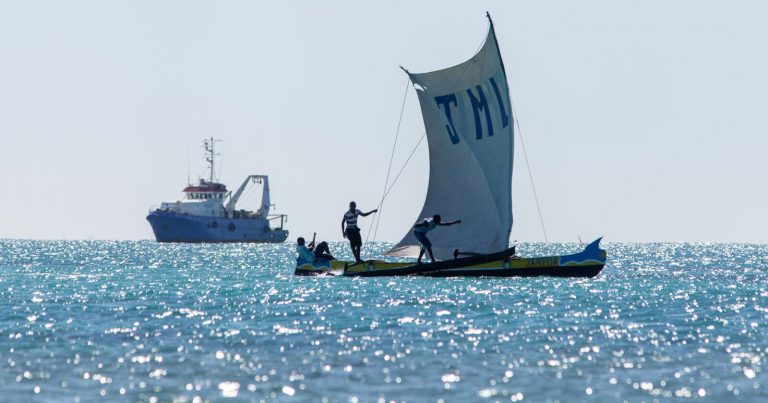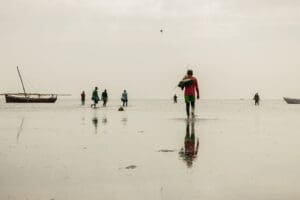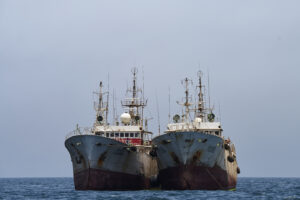Bottom trawling is often associated with large amounts of bycatch, damage to habitats, and overfishing, leading to biodiversity loss and negative impacts on low-impact fisheries. But its connection to climate change is less well known.
Blue Ventures and the Transform Bottom Trawling Coalition have released a new report ahead of the 2021 United Nations Climate Change Conference – COP26 – showing that bottom trawling is the most carbon-intensive way to catch fish.
The fuel-intensive nature of bottom trawling makes its overall carbon footprint almost three times higher than non-trawl fisheries. Large quantities of fuel are needed to drag the heavy nets across the seafloor, making bottom trawled seafood among the most emissions-intensive food we can consume. In some cases, bottom trawled seafood may have a bigger carbon footprint than livestock, and species targeted by bottom trawling, such as flatfish, shrimp, and lobster, have some of the highest carbon footprints of any protein source.
Bottom trawling’s climate impact is not limited to fuel-use emissions; trawling also releases carbon from marine sediments. Seabed sediments are the world’s largest carbon stores. As bottom trawlers drag weighted nets over the seabed, they disturb these carbon stores and release CO2 back into the ocean.
These findings are a major concern at a time where the climate and ocean emergencies are intensifying globally. Coastal states need to urgently tackle bottom trawling if they are to meet CO2 targets.
The new report aims to support the Transform Bottom Trawling coalition’s mission to see bottom trawling urgently tackled by all coastal nations, with evidence of a globally reduced footprint by 2030.
Read the new research briefing Bottom trawling and the climate crisis
Register for the bottom trawling event: COP26 Special: Bottom trawling and a zero-carbon future: what needs to change? on Monday 8th November 2021
Find out more about the Transform Bottom Trawling coalition























